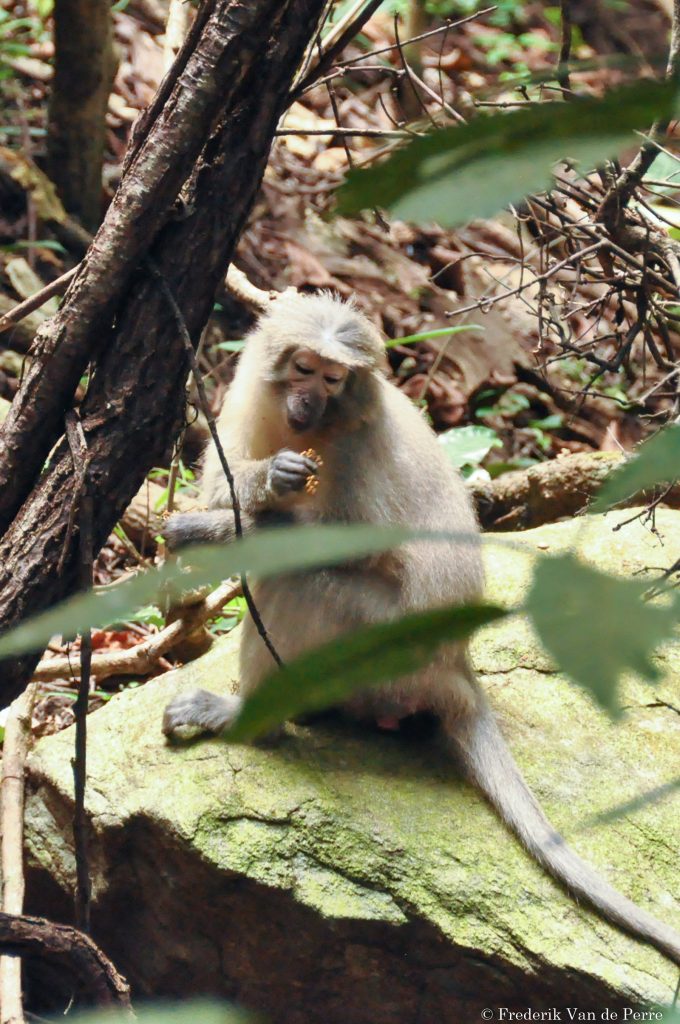In the heart of the Eastern Arc Mountains, roughly five hours driving from Dar Es Salaam, lies the Udzungwa Mountains National Park. Although little known by tourists compared to other places in Tanzania like the Serengeti National Park or the Ngorongoro Conservation area, Udzungwa is just as much worth visiting: the park is one of the most important areas for the conservation of primates and birds in Tanzania and even of the whole of Africa. Upon our arrival in Udzungwa National Park in July 2014, we were stunned by the scenery: the forest-swathed mountain peaks and the many waterfalls were such a stark contrast with the open savannas of Ruaha National Park in which we had spent the previous days.
The Eastern Arc Mountains, to which Udzungwa belongs, have been dubbed the African Galapagos for the incredible amount of endemic plants and animals they are home to. Encompassing 1990 km², Udzungwa contains several types of habitats, including steppe, grassland, miombo woodland, montane forest and rainforest, and boasts an impressive 400 different bird species, with rarities like the Green-Headed Oriole (Oriolus chlorocephalus), the Udzungwa Partridge (Xenoperdix udzungwensis) and the Rufous-winged Sunbird (Cinnyris rufipennis). But what makes Udzungwa so special is that it is also home to eleven species of primates, five of which occur nowhere else in the world!
We came to see the rare and elusive Sanje River Mangabey (Cercocebus sanjei), a monkey species closely related to the mandrills that can only be found in Udzungwa. The Sanje Mangabeys are difficult to spot in the dense forest, so we followed the local guides who knew how to find them. On this warm morning, the monkeys had decided to take their quarters at high elevations and it is thus after a hefty climb through the forest that we finally found them. Silently, we crept up through the undergrowth until we got a clear sight of them and could snatch some pictures of the group going about its daily business. Feeding quietly on the ground, the grey monkeys had soon gone into the forest where we could not follow them, and we were left happy to have glimpsed these gentle ghosts.
In Udzungwa, monkeys are everywhere. We did not need to climb mountains to spot the Udzungwa Red Colobus (Piliocolobus gordonorum), another rare species restricted to these forests: a few of them hung around our camp on the next day. In Udzungwa, you can also find Blue Monkeys (Cercopithecus mitis) climbing the electric lines along the road and should not forget to close your tent properly if you don’t want Yellow Baboons (Papio cynocephalus) coming in to raid your luggage in search of food.
We wish we had more time to explore Udzungwa National Park and discover more of its secrets. The park is a successful example of a community-run protected area that contributes to the conservation of many species. There are so many reasons to visit Udzungwa National Park, but the best of all is that in doing so, you lend much needed financial support to the communities who strongly rely on ecotourism. Planning to visit Tanzania? Do not miss Udzungwa National Park!










